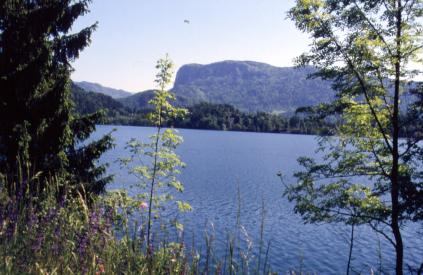Search
Nagoya Side Event Release
Press release: Nagoya, 28th October 2010
Nagoya/Athens, 28th October 2010 --- Mediterranean experts expressed today the commitment of the region to continue the establishment of marine protected areas and to pursue the protection of biodiversity beyond areas under national jurisdiction with a view to the establishment by 2012 of an effective network of marine protected areas, including on the high seas.
During a side event hosted today at the Convention for Biological Diversity (CBD), representatives from SPA/RAC, the Regional Activity Centre for Specially Protected Areas of UNEP/MAP, and cooperating groups including IUCN and WWF outlined how the region is taking up the challenges of the strategic plan of the CBD and the Rio +20 expectations, with the revision of the Mediterranean Biodiversity Strategic Action Programme (SAP BIO) expected to be launched next year.
“By establishing an effective Mediterranean network of marine protected areas, including on the high seas, by 2012, we take up the challenge of applying the leading principles of the ecosystem approach in relation to biodiversity, so as to protect, allow recovery and, where practicable, restore the structure and function of marine and coastal ecosystems”, said Abderrahmen Gannoun, Director of SPA/RAC.
“This will also ensure adequate protection of biodiversity in order to achieve and maintain good ecological status and address complex threats to biodiversity in an integrated manner”.
The Mediterranean is one of the most diverse marine environments in the world: it is home to nearly 8% of known species in less than 1% of the world’s ocean area and is recognised as one of the world’s 25 hot spots for biodiversity. The sobering data however indicate that 19% of Mediterranean known species are endangered and 1% are already extinct.
The efforts of the Mediterranean region with regard to marine and coastal biodiversity conservation and protection culminated with the adoption of the Specially Protected Areas and Biodiversity Protocol in 1995, and the establishment of the Regional Activity Centre for Specially Protected Areas and biodiversity (SPA/RAC) in Tunisia to facilitate its implementation.
This Protocol is one of the most advanced legal instruments of this kind, and the one with the largest number of marine species classified with a protection status. Its adoption has allowed the identification of 104 endangered or threatened species in the region, which are now included on the national lists of protected species for 18 Mediterranean countries. The Protocol strongly promotes the establishment of marine and coastal protected areas as inspired by the Convention for Biological Diversity, including those of Mediterranean importance that may embrace or be wholly located in the high seas.
While implementing the SPA and Biodiversity Protocol and contributing actively to the process that is currently being implemented by the United Nations General Assembly related to biodiversity in areas beyond national jurisdiction, the UNEP/MAP- Barcelona Convention adopted in November 2009 in Marrakech a "Regional Working Programme for the Coastal and Marine Protected Areas in the Mediterranean including the High Sea".
800 marine and coastal protected areas have been established so far in the Mediterranean, 25 of which are considered of Mediterranean Importance (SPAMI). 41% of the Mediterranean marine protected areas are small (less than 1,000 ha), only 15% are mainly marine, and most of these marine protected areas are located along the north-western Mediterranean shores.
“The challenges ahead remain high. The protected areas represent a mere 5% of the surface of the Mediterranean Sea, still far from the 20% goal of SAP BIO and they do not yet portray the diversity of the natural marine heritage”, said Mr Gannoun. “A large marine ecosystem for the Mediterranean project is under implementation since 2009 with a view to building capacities regarding the management of marine protected areas. Implementing the ecosystem approach, to which UNEP/MAP Barcelona Convention adhered in 2008, will be an excellent opportunity to take fully into account ecosystem goods and services in the management of specially protected areas.”
Note for Editors:
The role of UNEP/MAP - Maintaining the ecological health and integrity of the sea and its coastal areas is key to the development of a sustainable future for the Mediterranean region, and the complex threats to marine and coastal biological diversity – like pollution, urbanisation of the coasts, climate change, ballast waters and alien species, overfishing and unsustainable fishing techniques - call for a range of responses across a wide spectrum of actors.
The Mediterranean Action Plan/Barcelona Convention of UNEP/Regional Seas Programme is a regional action-oriented co-operation framework to support and coordinate the implementation of the Barcelona Convention and its 7 Protocols, highly advanced legal instruments, which were adopted by the 21 countries bordering the Mediterranean basin and the European Union, for the purposes of protecting the marine and coastal environments while taking seriously into consideration the prospective of sustainable management of natural resources and sustainable development.




Suivez nous sur ...